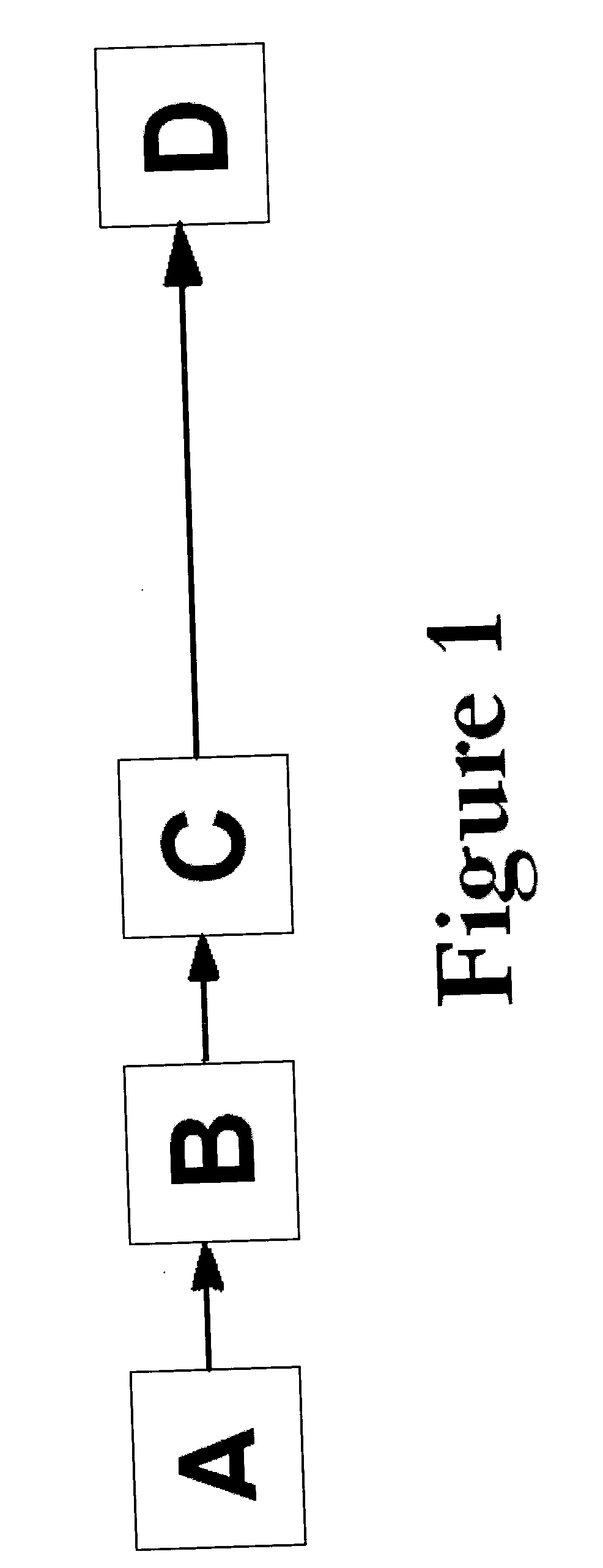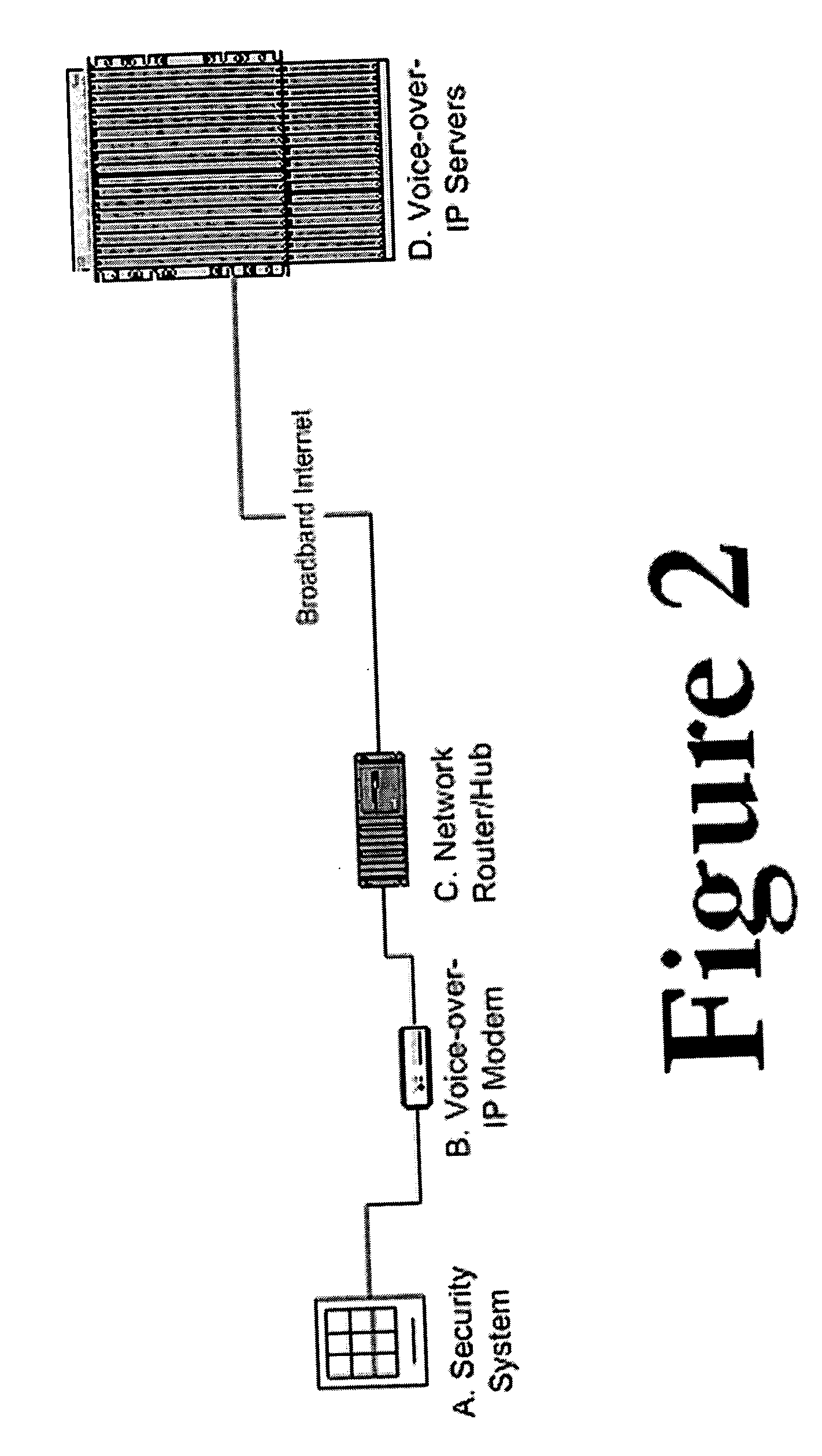Private VoIP network for security system monitoring
a security system and private network technology, applied in data switching networks, frequency-division multiplexes, instruments, etc., can solve the problems of dialup and other slow-speed connections not working at all, limited success, and satellite uplinks working, so as to reduce errors and improve overall response time.
- Summary
- Abstract
- Description
- Claims
- Application Information
AI Technical Summary
Benefits of technology
Problems solved by technology
Method used
Image
Examples
Embodiment Construction
[0031] Voice-over-IP telephone services are typically offered in the following fashion as illustrated in FIGS. 1 and 2. The blocks in FIGS. 1 and 2 may be defined as follows. [A] represents Telephone equipment (such as a phone, a fax machine, or a home security system) is plugged into. [B] represents a VoIP modem (Voice-over-IP modem), a (typically) sub-$100 device that includes a telephone port and an Ethernet port. The VoIP modem is plugged via Ethernet into [C] a hub or router in the home or office, which is connected to the Internet via Broadband.
[0032] Once connected to the Internet, the VoIP modem [B] communicates with [D] a VoIP server or servers, at a remote facility (and usually operated by VoIP companies), which offers telephone services to its customers who connect to it using VoIP modems [B].
[0033] The VoIP modem then connects to a remote server over the Internet, while also offering a dial tone to the telephone device plugged into it. People who have alarm systems in ...
PUM
 Login to View More
Login to View More Abstract
Description
Claims
Application Information
 Login to View More
Login to View More - R&D
- Intellectual Property
- Life Sciences
- Materials
- Tech Scout
- Unparalleled Data Quality
- Higher Quality Content
- 60% Fewer Hallucinations
Browse by: Latest US Patents, China's latest patents, Technical Efficacy Thesaurus, Application Domain, Technology Topic, Popular Technical Reports.
© 2025 PatSnap. All rights reserved.Legal|Privacy policy|Modern Slavery Act Transparency Statement|Sitemap|About US| Contact US: help@patsnap.com



